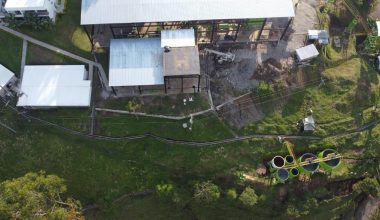The aerial cableway or aerial cable is a transportation system that began to be used at least since 250 B.C., reaching a great technological development at the end of the 19th century.
At that time it was used exclusively in mining, but also in other branches of industry. Its advantage over conventional transport systems lay in the ease with which it could traverse steep and inclined terrain, which was impossible for the former to overcome, obtaining, in addition, very cheap costs with no possible competition.
Of the two main systems, monocable and bicable, the second one was the one that demonstrated the best technical qualities and economic advantages and is the one we have chosen in the Vereda Guayaquil Mining Project together with MinexCorp and Pensilvania Gold & Mineral.
- Monocable ropeway: it is the one in which the cable carrier performs the functions of carrying cable and tractor. The cars are permanently or temporarily connected to the cable by means of clamps.
- Two-wire ropeway: a ropeway with a carrying cable on which the trolley car rolls, which is propelled by a traction cable to which it is attached. The term “bicable” does not refer to the number of wires present but to the two functions they perform, supporting and pulling.
The extraordinary quality of the metallic materials used in their construction has allowed that, if they have not been dismantled, they are preserved in good condition constituting an important legacy of the mining operation that, in some cases, has the consideration of mining heritage.

